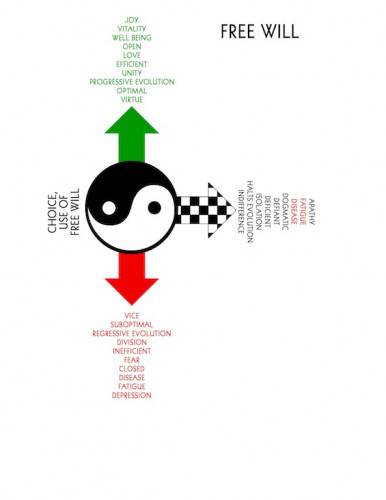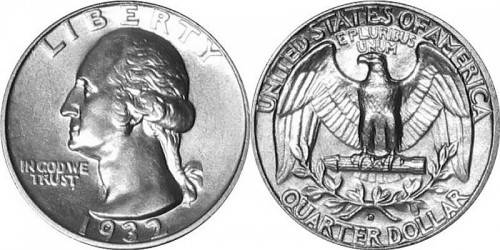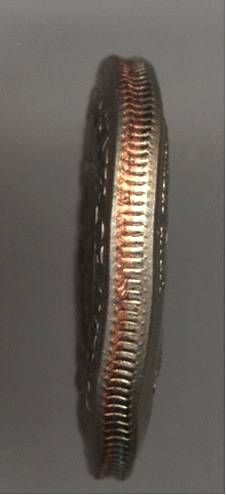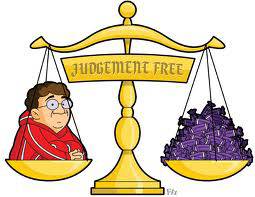Your 3 Choices (Pt. 2) – Effective Use Of Mind
Happy Wednesday!
I had a lovely day off yesterday. I did some reading and went for a long meditation hike in the hills. My morning was occupied by the arrival of my new infrared sauna. Very exciting!
Penny, Vidya and I looked into a wide variety of manufacturers before making a choice, and I’m glad I waited. I’ll share more on a blog devoted to infrared sauna benefits soon.
I hope you are all having a wonderful day. Today, I’ll continue our series on making effective choices:
YOUR 3 CHOICES (Pt. 2) – Effective Use Of Mind
If you are a human being, it is inevitable that you will be faced with many challenging choices in your day-to-day life. Some will lead to fulfillment and connection, and others will result in feeling pain and separation.
Today, I will show my views of the importance of having a clearly stated dream (and supportive core values) as a means of being logical, and avoiding unnecessary experiences of painful emotions.
I will give you a clear path to follow when making effective choices is your goal.
Your 3 Choices
In part 1., I described the 3 choices we all have in relationship to any person, place or thing. Let’s revisit them so we stay connected to the theme of this series:
1. The Optimal Choice: The one that’s best for everyone on your dream-team.
2. The Suboptimal Choice: The choice that usually offers instant gratification, but often creates challenges among dream-team members.
3. Do Nothing: I shared that there are two “Do Nothing” options:
A. Positive Use: To “do nothing” when you need more time to gather information, or compose yourself so you can contribute to a situation or discussion intelligently.
B. Negative Use: To “do nothing” when all relationships regularly call for “doing something”.
I shared that this option reflects the mental-emotional state referred to as “apathy”. Apathy is a word that means, “I don’t care.”
I also shared that “not caring” for someone is actually worse than hating or abusing them; not caring for oneself is usually the origin of this sad emotional state.
How To Use A Coin To Make Optimal Choices
I developed this exercise for myself and my clients to better understand how to make observations, and decisions that are affirmative of their dream or goal.
Just as yin (female) and yang (male) energies appear to oppose each other, but are actually in a state of functional opposition, all judgments depend on their antagonist for their existence.
Heads can’t be heads without tails and vice versa.
To use the coin drill I developed for making effective choices, you must first have a clearly stated dream, goal, objective or core value to direct your intention.
If you don’t know what you want, you don’t know what your intentions are. At that point, no choice carries more or less value than the other!until it starts causing pain!
Unnecessary pain and resistance in relationships only represents energy that, if effectively directed, would contribute effectively to your primary objective.
Rumi says, “beyond judgment, there’s a field. I’ll meet you there.”
Our minds are fields of possibility. The highest potential I know of is that of Unconditional Love; the ability to become person, place or thing.
When we accept Unconditional Love (or Pure Potential) as the highest potential for creating and experiencing, we come to realize that any act of authentic love is an act that brings about the experience of union or wholeness.
Looking at the coin images, you can see functional co-dependence. Heads depends on tails. Tails depends upon heads. Both heads and tails depend upon that which is unconditional (Pure Potential) as the bond between them.
To use a coin to make choices effectively in any experience or situation, follow these steps:
1. State your dream out loud or in writing. For example, my dream is expressed in and as balance and strength in my body-mind.
2. Heads: State your choice (judgment or observation): I’d like to eat two plates of pancakes with syrup for breakfast this morning because it makes me feel good when I do.
3. Tails: State the antagonist of your choice or judgment: I’d like to eat two plates of pancakes but I know that if I do, based on experience, I’m likely to move further from my dream of balance and strength in body-mind.
You will find that if you are honest with your desire to experience your stated dream, that only one of the choices will be optimal relative to your stated dream.
By performing the coin drill in a wide variety of situations, you will often find that heads negates tails and tails negates heads; I’m fat (tails) is supported by “I’m not as fat as I could get” (heads).
If your dream is to see and experience yourself as “not fat”, then energizing the belief that brings wholeness (and less perceived stress) is going to be the one that gives you the greatest energy and possibility to live fully.
Even if you “are fat”, stating aloud, “pancakes and syrup make me fat” many not be very consoling. Many would just look at themselves and say, “who cares, I’m already fat and I feel better eating pancakes and syrup!”
That’s where the middle of the coin becomes essential to the choice making process. The middle, representing Pure Potential represents your potential to change; to be less fat and healthier.
Therefore, when we come to an impasse with a should-shouldn’t, or do-don’t (heads vs. tails) approach, it is essential to remember that we all have the potential to change. We all have the Potential to create and experience our dreams.
As you can imagine, there are a myriad of scenarios that can emerge with this exercise. That’s part of the learning and growing process, for each one allows you to explore your own beliefs, observations and judgments!
Essential Tips For Effective Use Of The Coin Drill
1. Be clear what dream, goal, objective or core value is relevant to the change process being explored.
For example, your stated dream may be to have balance in your life. That’s a wide-vision dream.
When it comes to weather or not this is the best time to buy a new car, your perception of balancing may not extend to the concept of a new car. It may be too hard to make a direct connection to the challenge you are facing with the choice of buying, or not buying a new car.
2. Core values are the values I teach you to develop to support decision making and action steps in all key areas of your life.
In the above example, balancing your body may not give you enough awareness as to how your car relates to body balancing. Having core values around finances, and being clear as to how much money you need to cover your expenses and have some left to cover the unexpected will help you make a decision that ultimately should lower stress; that’s the connection to the dream of balancing your body.
3. Distinguish genuine needs from wants. Again, this is the function of core values. If we aren’t sure what we need, we can easily find ourselves arguing and defending ideas that really don’t contribute to our stated dream, goal or objective. If you just “want” to balance your body, and don’t believe you “need to”, you are likely to eat the pancakes and syrup!
4. Use Thought-Action: Always carry a coin for this purpose with you. I’d suggest investing in a unique coin; no need to be expensive, just a coin that you can easily distinguish from the others in your pocket.
Many of my clients and patients tell me they use the coin drill in their head. That’s rarely very effective because ideas are only ideas until acted upon. Then they become experiences.
Only through your experiences practicing the coin drill can you ever cultivate wisdom. The act of holding and using the coin while in process, establishes a body-mind relationship, helping the “idea” become imbedded in your self-awareness.
You don’t worry about finding the keyhole in your car at night because your body-mind has many experiences placing the key in the daytime; now you just let your body put the key in; thinking about it only makes things worse at this point.
5. The Word: All creations emerge first as thoughts, then typically as words (planning phase), and finally, fully embody themselves as actions.
Just as it is less effective to flip the coin in your mind than it is to flip it with your fingers and body, inner-dialogue doesn’t produce vibration or “tone”.
When we hear ourselves talk, we are much more likely to listen to, and feel what we are saying.
I’ve found that hearing myself talk as I go through the process makes it easier to be objective with my “self”. Being honest and objective with yourself first is a prerequisite to being honest and objective with others.
Let me know how it goes for you if you get stuck. You can leave me comments on the blog and I’ll do my best to get back to you.
We are running a special this month for my program titled, The 1-2-3-4 For Overcoming Addiction, Obesity, and Disease.
This program teaches you how to identify your dream and establish effective core values to guide your decisions and actions in your dream-building process as well as help you to uncover your core source of addictive behavior.
Enjoy enlightened choice making for 25¢!
Love and chi,
Paul Chek



















Find me on the web